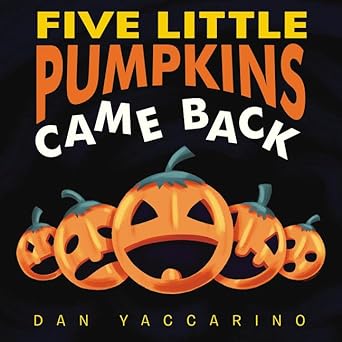Disclosure: This post contains affiliate links. As an Amazon Associate, I earn from qualifying purchases—at no extra cost to you. I only recommend items I truly find useful for early learning.
10 Halloween Learning Activities for Preschoolers (Plus Printables & Toy Picks)
Halloween excitement is the perfect spark for meaningful, play-based learning. Below you’ll find ten Halloween learning activities for preschoolers that build early literacy, math, sensory processing, fine-motor skills, and social-emotional growth—without the sugar rush. Each idea includes quick setup tips, learning goals, and optional tools or toys you can use to extend the activity.
How to Use This Guide
- Choose 2–3 activities per week and repeat them; repetition builds confidence and mastery.
- Keep language simple and warm. Name what your child is doing (“You’re scooping seeds—so strong!”).
- Invite choice: “Do you want bat shapes or pumpkins today?”
- Have basic tools ready: kid tongs, scoops, trays, dry-erase pockets, stickers, tape, crayons.
1) Pumpkin Seed Sensory Bin (Counting & Sorting)
Fill a bin with clean, dried pumpkin seeds. Add small cups, scoops, a muffin tin, and kid-safe tongs. Children scoop, pour, and sort by amount or color (you can dye a portion of seeds with food coloring ahead of time).
Learning goals: tactile regulation, hand strength, 1:1 counting, sort/classify, vocabulary (more/less, empty/full).
Try with: child tongs, measuring scoops, small trays
(tongs,
scoops,
tray set).
2) Candy Corn Counting & Patterns
Use pom-poms or paper triangles in candy-corn colors (yellow, orange, white). Make simple AB/ABC patterns to copy, then count sets into labeled cups 1–5.
Learning goals: patterning, numeral recognition, fine motor (pinch), color naming.
Try with: pom-pom pack, number cups, dot stickers
(pom-poms,
stacking cups,
number dot stickers).
3) Bat Shapes Collage (Geometry Talk)
Pre-cut foam or paper shapes (circles, triangles, rectangles) in black/purple. Children build “bats” by combining shapes; add googly eyes. Invite math talk: “Two triangles make wings.”
Learning goals: shape names, part-whole relationships, describing positions (on, under, next to).
Try with: foam shapes, glue dots, googly eyes
(foam shapes,
glue dots,
googly eyes).
4) Spooky Letter Match (Phonemic Awareness)
Write uppercase letters on paper “pumpkins” and lowercase on “ghosts.” Children match pairs, then say each letter’s sound. Extend by hiding letters around the room for a gentle “haunted hunt.”
Learning goals: letter recognition, sound correspondence, visual scanning.
Try with: letter tiles or cards, pocket chart
(letter tiles,
pocket chart).
5) Ghost Bowling (Gross Motor + Numerals)
Draw ghost faces on 10 white plastic cups or bottles. Set them like bowling pins; roll a soft ball. Count pins knocked down and record on a simple score card (1–10).
Learning goals: numeral recognition, counting, force/aim practice, turn-taking.
Try with: kid bowling set or soft foam ball
(Halloween themed foam bowling set).
6) Leaf-Rubbing Science (Observe & Describe)
Collect leaves; place under paper and rub with the side of a crayon. Compare shapes, veins, sizes, and textures. Create a simple “leaf museum” on a wall.
Learning goals: observation language, compare/contrast, science vocabulary (smooth, rough, edges, veins).
Try with: jumbo crayons, child magnifier
(jumbo crayons,
kids’ magnifier).
7) Storytime Stack: Halloween Books That Build Language
Choose 3–5 gentle, age-appropriate Halloween picture books. Before reading, preview tricky words; after, act out a favorite scene or draw the character together.
Learning goals: new vocabulary, sequencing, comprehension, narrative play.
Try with: a short curated list:
Boo to You, Winnie the Pooh!,
It's the Great Pumpkin, Charlie Brown: Deluxe Edition (Peanuts),
Chicka Chicka Tricka Treat.
8) Pumpkin Math: Size & Weight Comparisons
Set out two or three pumpkins of different sizes. Children predict which is heaviest, then test with a kid-friendly scale. Measure circumference with a soft tape and compare.
Learning goals: measurement language (heavier/lighter, longer/shorter), prediction, data talk.
Try with: balance scale, soft measuring tape
(balance scale,
tape measure).
9) Dot-to-Dot & Maze Printables (Pre-Writing Skills)
Print simple Halloween mazes or dot-to-dot sheets. Slip into dry-erase pockets for reuse. Model top-to-bottom and left-to-right strokes as children trace.
Learning goals: visual-motor integration, pencil control, pre-writing directionality.
Try with: dry-erase pockets, low-odor markers
(dry-erase pockets,
dry-erase markers).
10) DIY Halloween Manipulatives Kit
Fill a small bin with mini cauldrons, plastic spiders, bat erasers, and orange/black pom-poms. Use it for counting, color sorting, “more/less,” and pretend play stations.
Learning goals: number sense, classification, imaginative play, language expansion.
Try with: mini cauldrons, spider counters, pom-poms
(mini cauldrons,
spider counters,
pom-poms).
Printable Bonus & Toy Picks
Grab my free one-page “5-Minute Halloween Learning Activities” printable to stick on the fridge, plus a premium printable pack with extended materials lists, step-by-step visuals, and caregiver prompts.
Recommended Tools & Toys: Keep it simple and durable. You’ll reuse these all year.
Starter Sensory Kit ·
Fine-Motor Tongs ·
Balance Scale ·
Letter Tiles ·
Dry-Erase Pockets
Tips for Caregivers & Teachers
- Safety first: supervise small pieces; swap in larger items for toddlers.
- Reduce overwhelm: offer 2–3 choices, then put away extras.
- Language boost: narrate actions, label feelings, and invite turn-taking.
- Reuse & extend: repeat favorites next week with a tiny twist (new tool, new rule).
Wrap-Up
These ten educational Halloween activities bring spooky fun and real skill-building to your classroom or living room. Save or print this list, grab the freebies, and let me know which activity your little learner loved most!
Early Learning Made Easy — by Ms. Vanessa
Making Early Learning Simple, Joyful, and Evidence-Based.
Attribution & Research Disclaimer: Content is independently created and informed by evidence-based early childhood practice. This post is an original educational resource and does not rely on external sources beyond the author’s professional experience. It is not affiliated with or endorsed by any institution.
Sources used for this article: None (original activity designs by Ms. Vanessa).





























